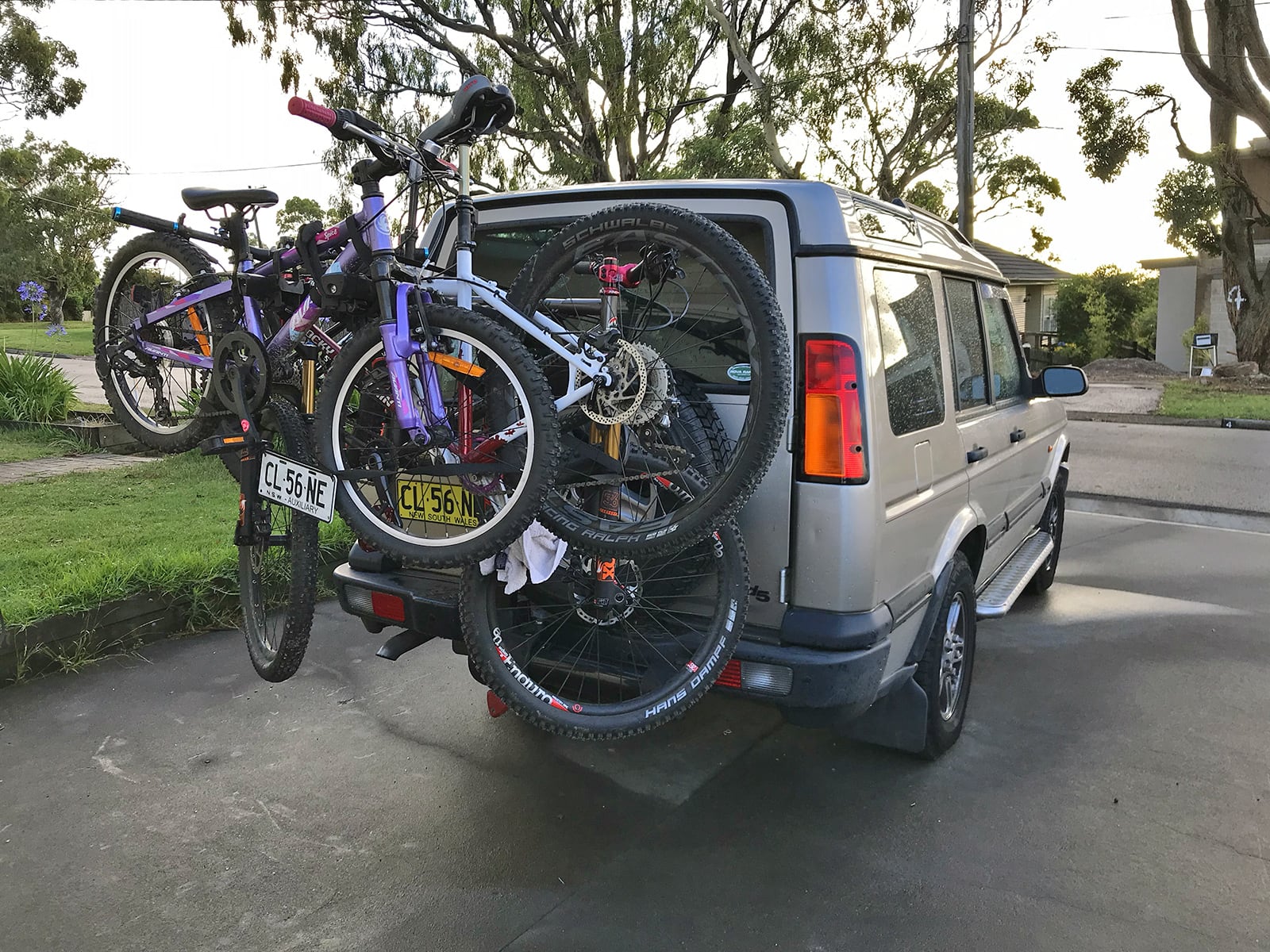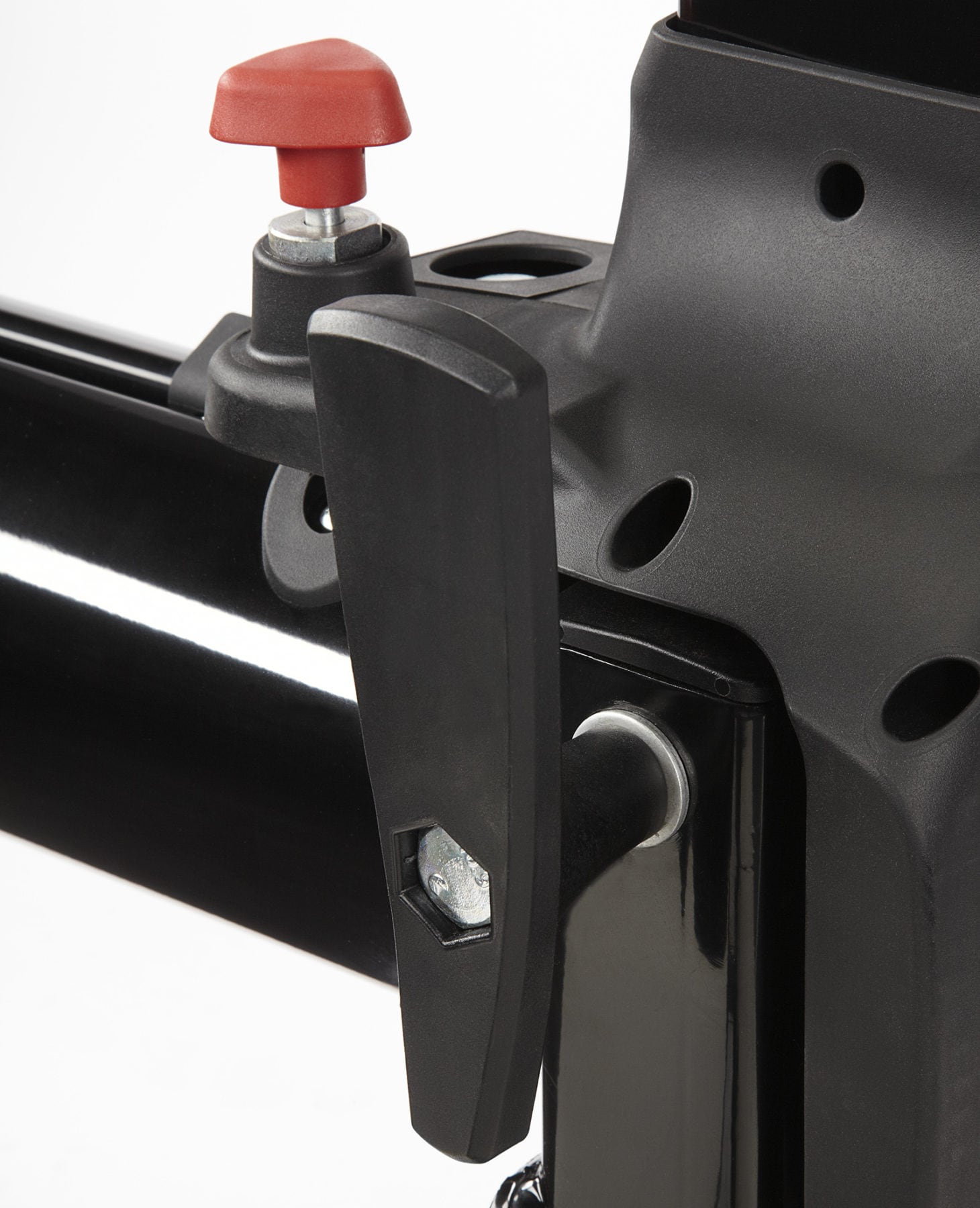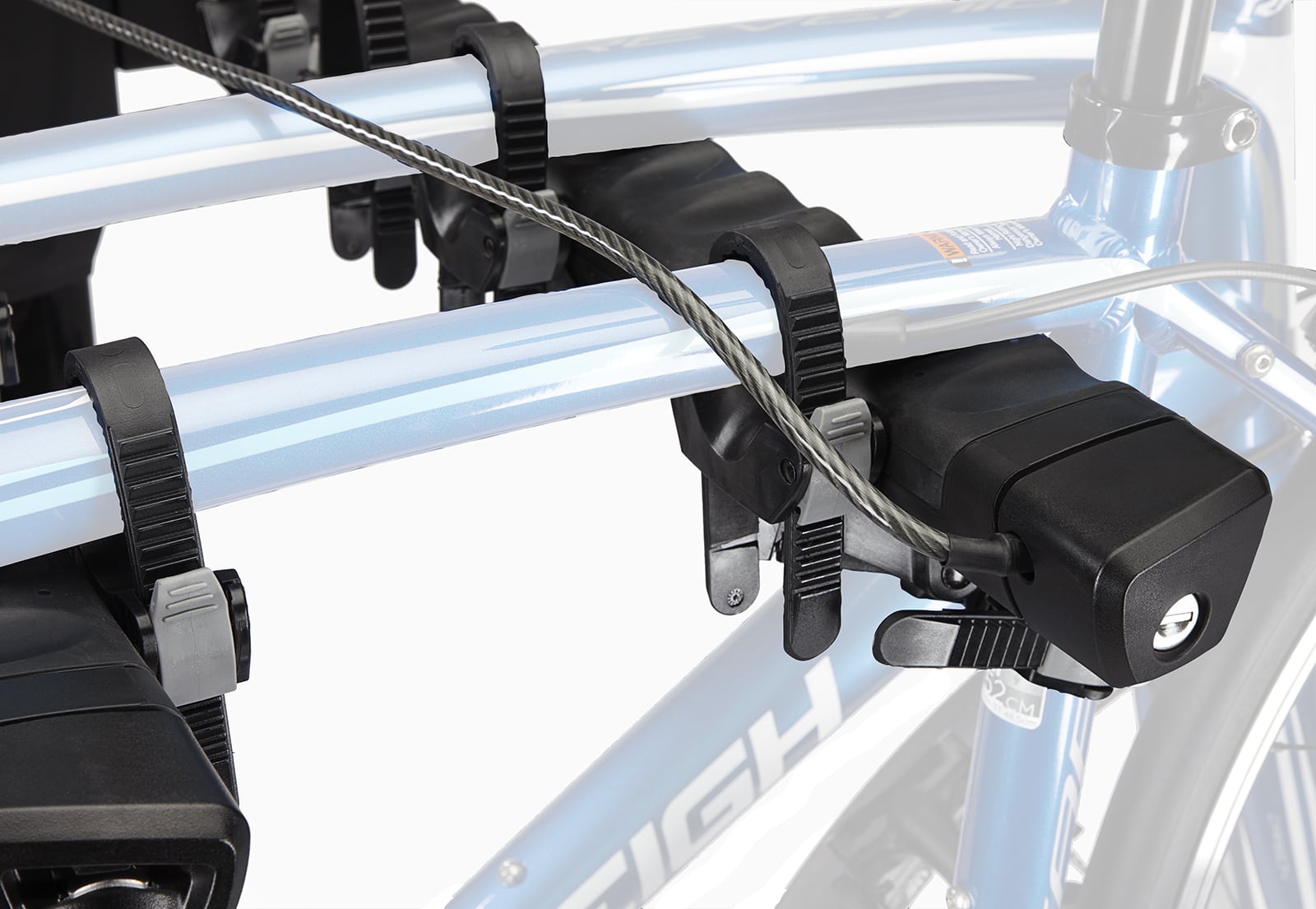Yakima FullSwing: Tested

It’s this writer’s most dreaded moment: figuring out how the hell I am going to take the family’s bikes with us on holidays. Bicycles are, without doubt, one of the most awkward things to carry in or on a vehicle. Methods differ – up top on the roof or via a hitch/towball-mounted carrier – each of which has its positives and negatives. And although I don’t mind a single bike up on the roof, when you get to more than two, a hitch- or towball-mount carrier is by far the better option. Not only do these things carry more bikes, but they are also down low behind your vehicle, thus having less effect on fuel consumption. And yeah, it also means there’s less chance of you forgetting your precious two-wheeler is up top and wiping it out on a garage door.

One of the main bike transport issues with the Walker family’s old Land Rover Discovery is the Landy’s side-opening rear door. Hitch/tow-mount bike carriers don’t mesh well with this door type; a large number of these carrier types are ‘fold-down’ only (see our review of the Yakima JustClick 3 here), allowing for some cargo area access, which works fine with vehicles that have a lift-up rear door but, with the Land Rover, it doesn’t drop low enough.
The Yakima FullSwing is my solution. This carrier includes a clever dual-articulated hinged arm (located underneath the rack’s vertical arm) that folds out horizontally, thus allowing me to open the Disco’s rear door all the way out – even with four bikes attached. The FullSwing is seriously over-built. As in, it is heavy, at 25.4kg, but this weight is a necessity; when you think of the average weight of a mountain bike (11-15kg), you realise that all that weight swung out wide away from the central pivot point adds plenty of leverage and load-weight to the bike-laden part of the FullSwing.

Fitment of the Yakima FullSwing is straightforward – once you’ve put it together; it’ll take five-to-10 minutes to join the top and base of the unit. The FullSwing utilises what Yakima dubs an “AutoPin” which slots into the vehicle hitch’s ‘hole’ as you slide the base section into the hitch. Then you simply tighten the SpeedKnob, which in turn tightens an expander nut in the bottom arm, locking itself to the hitch. Once that’s done, you can lock the SpeedKnob with the SKS (Same Key System) key supplied (this also locks the inbuilt cable lock that runs around your bikes, securing them to the rack) and not worry about potential theft.

The FullSwing is easily operated. To swing it out, you simply unscrew the large T-handle at the rear (closest to vehicle) of the rack then pull the red button near that (to release a slot-pin) and the dual-articulated hinge does the rest, with the rack arms (and bikes) locking out to 90 degrees from the closed position. Closing it up is just as simple: pull the red pin at the outer end of the base arm, push the largish red lever in the centre, and away you go, always remembering to both ensure the lock-pin has locked, and that the T-handle is retightened.

The bike arms are padded and feature Yakima’s “AntiSway” cradles that, as the name suggests, assist in minimising bike sway during transportation. They do to a certain extent – there’s still some movement, of course – but a tip to further reducing the chances of bikes banging up against each other is to also strap the front wheel to the downtube so that the wheel doesn’t swing around. The ZipStrips used to secure the bikes also work very well. Oh, and as per a lot of Yakima’s carriers, there’s a bottle-opener. Yes, we agree, that is just awesome.
Negatives are few with the Yakima FullSwing: the weight is a bit of an issue, but with all that leverage put on the carrier, the unit does need to be built strong (and, thus, heavy). The carrier also has no provision for permanent fitment of an auxiliary number plate. In most Australian states, if your bikes obscure the number plate and/or rear lights, you can cop a fine. Yakima does offer an accessory rear light-bar (LightMate, RRP $99) if needed, as well as the PlateMate (RRP$29.95) number-plate holder (I have this). I usually tie said number-plate holder to the rack using a tie-down strap looped through the bikes and – thankfully – the Disco’s rear lights are set high and still visible, so I haven’t had the need to buy a separate light board.

For those looking to transport two to four bikes (at four, it takes a little loading/wrangling) the FullSwing is a great option. It is built very tough, is simple to operate, and offers that unique feature of full access to the cargo area without having to remove bikes or the carrier itself, whether your vehicle has a side-opening rear door, or a lift-up one. It ain’t cheap, but once you’ve had to open the cargo area with the bikes loaded up for the first time, looking for that lost kid’s toy or forgotten travel item, you will know it forever-more as top bang for your bike-carrying bucks.
RRP: $779 www.yakima.com.au




